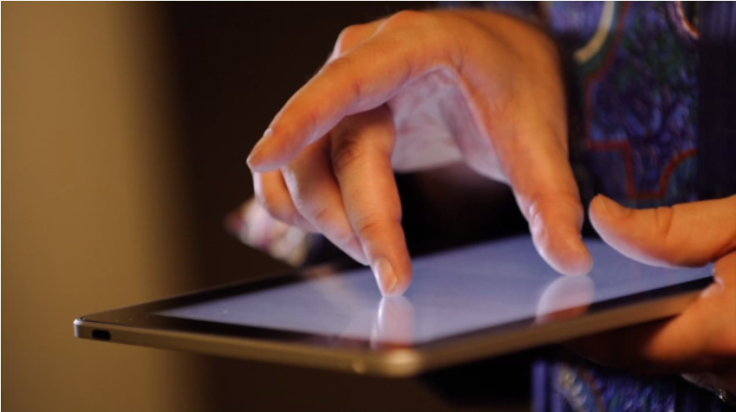When Doctors Don't Need iPads: Poor Interaction With Patients May Impede Mental Health Diagnoses

Your date ignoring you from across the table, his eyes fixed on the pool of light in his hands, is one thing. Your doctor affixing his gaze on a shiny new iPad is another. A new study from Northwestern University has shown that doctors who use electronic records interact less with their patients than doctors who rely on old fashioned ink-and-paper files.
Electronic devices have already begun their migration into doctors’ offices. Facilities are doing away with in-patient paperwork and turning to cloud-based systems, which record and store people’s information digitally. Desktop computers fall to mobile devices that doctors can consult in a flash. Information becomes immediately available, just like in civilian life. But now researchers say the drawbacks may be crossing over, too.
Northwestern experimenters conducted a field study of 100 patient visits at a primary care clinic. Sessions were observed and video recorded to give researchers full advantage of tracking eye gaze. What they found was that doctor-initiated gazes routinely produced patient-met gazes. Yet patient-initiated gazes were not always reciprocated. Subjects would try to get their doctors’ attention, but would be met with gazes drowned in the realm of pixels.
Enid Montague, lead author of the study, argues the time doctors spend with their heads in patient records could be put to better use. “That’s time that they’re not engaging with the patient,” she told The Wall Street Journal’s Market Watch. Doctors that use paper files tended to review the patient’s records outside the exam room, Montague added. But she and her colleagues observed that when doctors went digital, they often brought the device into the room and fiddled with it throughout the session.
While researchers didn’t observe any slip-ups in protocol, less certain is whether doctors were able to catch the bevy of minute, nonverbal cues patients may have elicited during the exam. Depression and other mental illnesses come with specific patterns of behavior, many of which people choose, for one reason or another, not to express with words — problematic mostly because the first few minutes of a patient visit are critical, Montague says.
It’s during this time doctors are asking about recent vacations, new hobbies, love interests, and are generally catching up since the last visit. If a person dodges personal questions and averts his or her gaze, sullenly, the preoccupied doctor could miss a crucial window for further probing. Without that initial trust and rapport, the researchers argue, patients may feel uncomfortable discussing important topics for the rest of the appointment.
“We can improve the design so that physicians can engage in these other nonverbal communications more effectively,” explained Montague.
Past research suggests the move to electronic housekeeping may be imperfect in other areas, too. One 2013 study outlined several measures that may be counter-productive to care facilities, such as prescription ordering, which, with a one wrong keystroke, could send a batch of medication totally off-route; or “alert fatigue,” where doctors lose track of their patients with each up-to-the-minute update they receive. So, the stakes are high.
In the end, the migration is inevitable. As the Affordable Care Act encourages each facility to immortalize their records from esoteric manila eyesores to backed-up ones and zeroes, patients enjoy the luxury of potentially faster care and greater overall satisfaction. Though Farley believes we are “just beginning to scratch the surface” of digital records malfunctions, removing human error usually turns out to be a collective good — that is, assuming the technology doesn’t produce new ones in the process.
Source: Montague E, Osan A. Dynamic modeling of patient and physician eye gaze to understand the effects of electronic health records on doctor–patient communication and attention. International Journal of Medical Informatics. 2013.



























